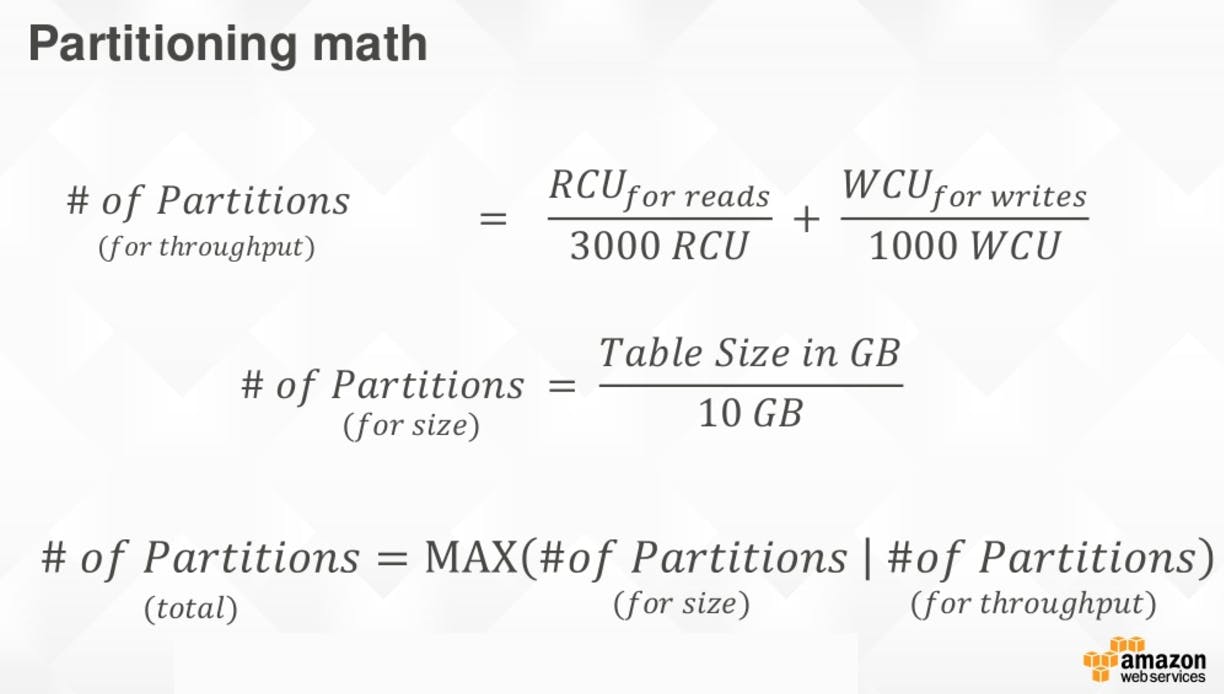The no. of partitions in a DynamoDB table goes up in response to increased load or storage size, but it never come back down, ever.
DynamoDB is pretty great, but as I have seen this particular problem at 3 different companies — Gamesys, JUST EAT, and now Space Ape Games — I think it’s a behaviour that more folks should be aware of.
Credit to AWS, they have regularly talked about the formula for working out the no. of partitions at DynamoDB Deep Dive sessions.
However, they often forget to mention that the DynamoDB will not decrease the no. of partitions when you reduce your throughput units. It’s a crucial detail that is badly under-represented in a lengthy Best Practice guide.
Consider the following scenario:
- you dial up the throughput for a table because there’s a sudden spike in traffic or you need the extra throughput to run an expensive scan
- the extra throughputs cause DynamoDB to increase the no. of partitions
- you dial down the throughput to previous levels, but now you notice that some requests are throttled even when you have not exceeded the provisioned throughput on the table
This happens because there are less read and write throughput units per partition than before due to the increased no. of partitions. It translates to higher likelihood of exceeding read/write throughput on a per-partition basis (even if you’re still under the throughput limits on the table overall).
When this dilution of throughput happens you can:
- migrate to a new table
- specify higher table-level throughput to boost the through units per partition to previous levels
Given the difficulty of table migrations most folks would opt for option 2, which is how JUST EAT ended up with a table with 3000+ write throughput unit despite consuming closer to 200 write units/s.
In conclusion, you should think very carefully before scaling up a DynamoDB table drastically in response to temporary needs, it can have long lasting cost implications.
Like what you’re reading? Check out my video course Production-Ready Serverless and learn how to run a serverless application in production.
We will cover topics including:
- authentication & authorization with API Gateway & Cognito
- testing & running functions locally
- project organization strategies
- CI/CD
- centralised logging
- monitoring
- distributed tracing with X-Ray
- tracking correlation IDs
- performance & cost optimization
- error handling
- config management
- canary deployment
- VPC
- security
- leading practices for Lambda, Kinesis, and API Gateway
and include all the latest changes announced at the recent AWS re:Invent conference!
Production-Ready Serverless_See it. Do it. Learn it! Production-Ready Serverless: Operational Best Practices introduces you to leading patterns and…_bit.ly


